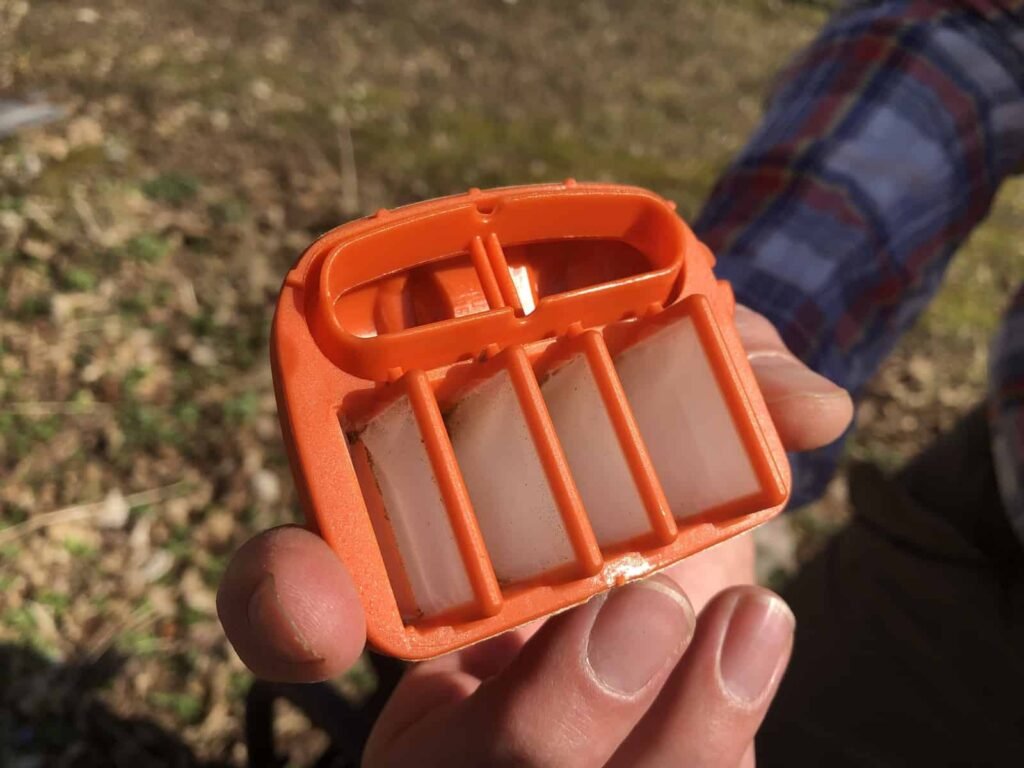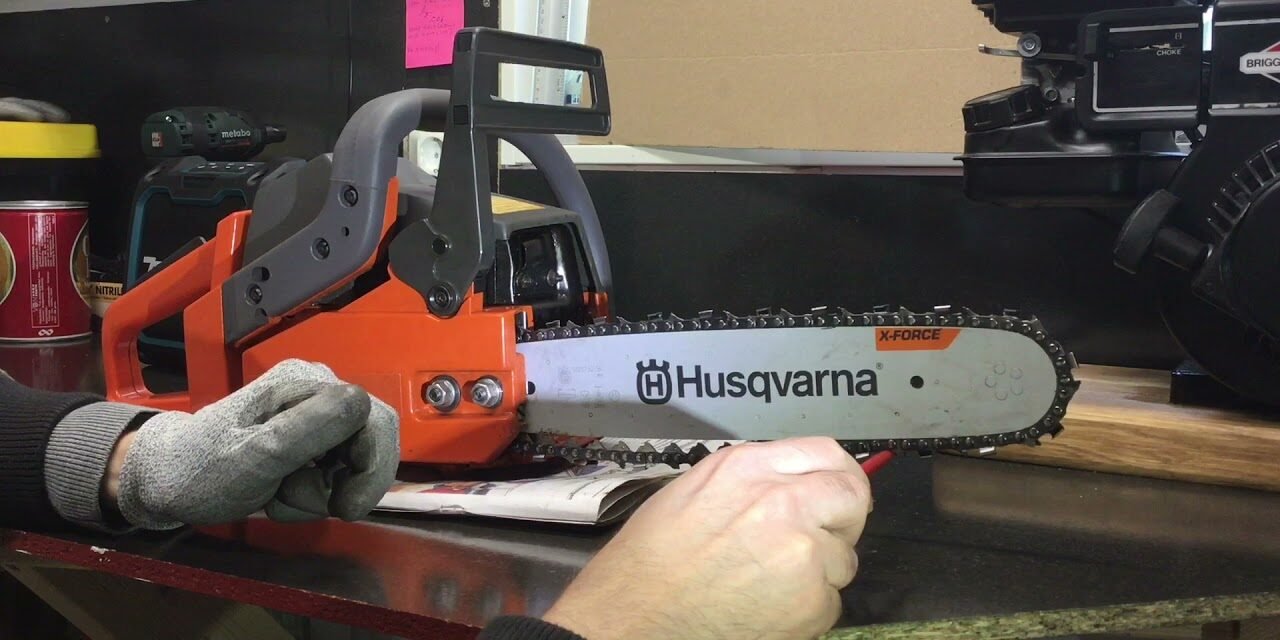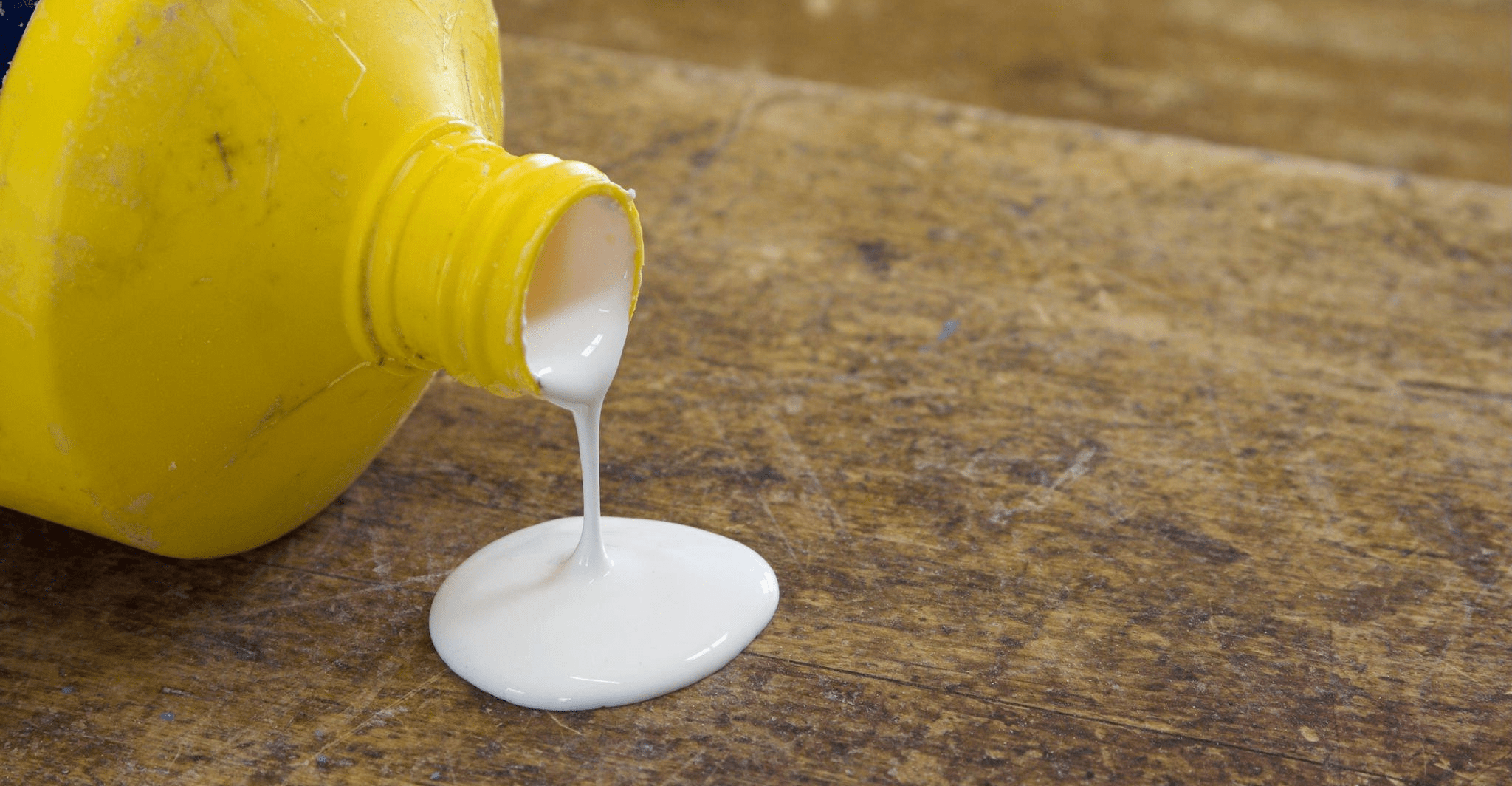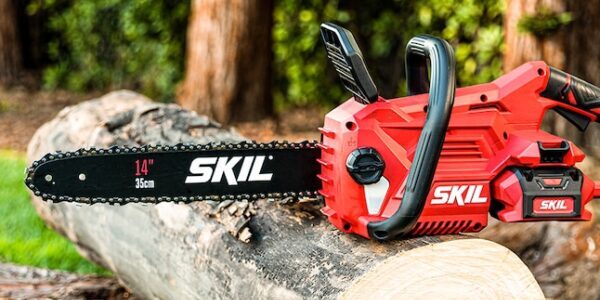All forest and woodworking tools, especially chainsaws, last longer and work better if you show them a little love now and then. I have collected a lot of tricks that I have learned over the years that have helped me maximize the life of my equipment. It’s frustrating when the saw does not work, and it’s even worse to have to spend money on new parts.
I firmly believe that you can fix and maintain most things on a chainsaw yourself as they are pretty simple tools. In this post I’ve included some tips on how to replace and maintain parts on your chainsaw, how often you should change parts, and what tricks you can use to make it as easy and safe as possible.
Table of Contents
Chainsaw Maintenance – What To Start With
Always make sure that the chainsaw is switched off, cold and disconnected (if electric) before you start with any maintenance or service. With that said, let’s start by disassembling the chainsaw:
Disassemble the chainsaw (5 steps):
- Unscrew the chain cover
- Remove the chain and saw blade
- Remove the cylinder head
- Remove / unscrew the starter cover
- Remove the flywheel cover






Engine maintenance
Here are some tricks for maintenance of the chainsaw, for each of the different parts on the chainsaw. Some parts wear faster than others and need more maintenance, while some are more important to keep clean. Always speak to your dealership about what wears out the fastest on your chainsaw model and if there are any special tricks for your particular model.
If you are looking for tips on how to sharpen and file your chainsaw chain check out out guide.
Spark plug maintenance
If the engine is difficult to start, there is a high probability that the spark plug is the root cause. How often do you need to change the spark plug? Most people recommend replacing the spark plug once a year, and I do too if I have used the saw quite a lot during the year. A faulty or dirty spark plug is sooty / black with soft coatings.
An faulty spark plug can be caused by:
- Too much oil in the fuel
- A dirty air filter
- Incorrect choke level
- Bad ignition cables
- Too cold / hard spark plug
All of these factors can lead to coating on the spark plug electrodes. Nowadays, spark plugs are so cheap that it may be worth replacing instead of cleaning. However, if you do not have an extra spark plug available when you have problems, it may be enough to clean the spark plug.
Problems can also occur if the electrode gap is not set correctly. 0.5 mm is usually correct, but double check the operating instructions to make sure what’s correct for your model.
How to replace spark plugs (8 steps):
1. Make sure that the chain brake is moved forward
2. Unscrew the cylinder cover
3. Pull off the ignition cap

4. Use a wrench to unscrew the spark plug

5. Remove the spark plug and insert the new one
6. Screw on the new spark plug with the wrench
7. Attach the spark plug cap to the spark plug
8. Screw the cylinder cover back on
Fuel and fuel filter
If you know you will not use the chainsaw for three months or more, you should drain the fuel from the engine. If necessary, fuel should also be added to the engine. When storing your chainsaw there are a few things to consider, that we cover in – How to seasonally store your Chainsaw.
Fuel filters should be replaced once a year, regardless of how much you have used the chainsaw.
The right fuel mix
A chainsaw is driven by a two-stroke engine (unless it’s electric), which means that it must be run on a mixture of petrol and two-stroke engine oil. Using the right mixture in the fuel is in my opinion the most important and easiest thing to do so as not to wear out your chainsaw unnecessarily.
Here are some tips to keep in mind when choosing gasoline for your chainsaw:
- Use unleaded or leaded quality gasoline.
- Do not use gasoline with an octane rating lower than 90.
- Use petrol with a higher octane number when working when the engine is constantly at high speeds.
- Do not use gasoline that contains ethanol or methanol as this can corrode the inside of the engine.
Here are some tips to keep in mind when choosing a motor oil for your chainsaw:
- Do not use boat or car oil for the fuel in the chainsaw.
- Do not use outboard oil intended for water-cooled outboard engines.
- Never use oil intended for four-stroke engines.
- See the product manual for which fuel mixture your chainsaw uses.
Always mix the fuel in a previously refueled fuel tank or container. Start by pouring in half of the gasoline, then add the oil. Then shake the container to mix the contents. Finally, pour in the rest of the petrol and mix the fuel again by shaking carefully. Remember not to make too much fuel at a time, focus instead on the right mixture.

Note! If the chainsaw has a catalyst, a special mixture may be needed. Use unleaded quality petrol as lead in the petrol otherwise destroys the catalyst.
Muffler Exhaust Silencer
The function of a muffler is to reduce the noise level and remove exhaust fumes from the chainsaw user. Many mufflers have a spark protection net whose function is to stop any sparks that may arise in the exhaust gases. It is important to clean this net often.
I recommend cleaning the spark plug network every 25 working hours. It is usually enough for it to stay up-to-date. The most effective way to clean it is to brush with a simple wire brush. Unscrew the net, then use the wire brush to remove rust and debris.
If the net is not cleaned and blocked, damage to the cylinder and piston can occur. If it is completely clogged and cannot be cleaned completely, the net should be replaced.
Air filter
I recommend keeping a good eye on the air filter so that it stays clean, otherwise the saw might overheat. My recommendation is to clean the filter after about 5 hours of work or after 15 refills of fuel. These are of course just guidelines.
By frequently cleaning the chainsaw air filter, you avoid:
- Carburetor disturbances.
- High fuel consumption.
- Worse effect.
- Problem with start.
- Engine wear.
Follow these steps to clean the chainsaw air filter:
1. Make sure the engine is off and cold.
2. Remove the cylinder head.

3. Lift off the air filter.

4. Shake the filter to clean of dirt, use a small brush if necessary (I simply use an old toothbrush).
5. Wash the air filter with soap and water if it is still dirty.
6. Allow the filter to dry completely before reassembling.
Keep in mind that many chainsaws can and should use different air filters depending on the condition. Different work environments and weather / seasons should lead to the chainsaw being used with different types of filters.
Replacement and service of starting line
If the starting line is worn and worn, it can be good to know how to replace it with a new one.
Follow these steps to replace the starter cord:
Unscrew the starter
Pull out the rope a bit (approx. 30 cm) but leave the starter handle retracted.
Reset the return spring by allowing the wheel to rotate backwards.
Unscrew the wheel and lift it off
Attach a new starting line to the wheel and wrap a few turns around the wheel.
Attach the pulley to the return spring so that the end of the spring engages.
Screw the wheel back on
Pass the line through the hole to the handle
Pull the rope through the handle and make a solid stop knob

Pull out the starter rope before attaching the starter again. Slowly release the rope so that the rope wheel pulls it in. Then screw the starter back on.
Assemble the chainsaw
Be sure to put everything back in the same order as you disassembled them (follow the steps above in reverse order). Use a good table or a good container to collect the things you remove. Otherwise, it’s easy for things to magically disappear while you work.
Summary
A chainsaw may be relatively small, but it has plenty of things to tinker with. Depending on how much you work with your saw, you of course need to fix and maintain your saw differently. Assuming that you work relatively often with your saw, there are a few things that you should do to increase the life of your saw:
Every time you use it:
- Check the chain’s sharpness and tension
- Check that the oil supply to the chain works
- Clean the chain groove
- Check all screws and nuts on the covers
- Clean the starter air intake and the air filter
Every week of use:
- Lubricate the coupling drum
- Clean spark plugs
- Clean the spark plug
- If necessary, clean the carburetor compartment
Every month / year:
- Clean the carburetor
- Empty and clean the fuel and oil tanks
- Check all cables and electrical connections
- If necessary, replace spark plugs
Feel free to write a comment if you have more good tips about service and chainsaw maintenance.





